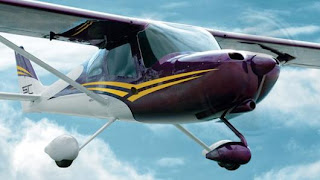
Imagine long-distance air-travel that could get you to the other side of the globe in less than a quarter of the time it presently takes? Well, this may soon become a reality, and a commercially viable mode of passenger transport. Researchers from Reaction Engines, a company created for design and development of advanced space transport and propulsion systems, are investigating the possibility of hypersonic civil transport in a three year study to examine the feasibility of reducing long-distance flights (e.g. From Brussels to Sydney) to less than 4 hours. The project, called LAPCAT (Long-Term Advanced Propulsion Concepts and Technologies) is aimed at creating a liquid hydrogen fuelled aircraft capable of sustained Mach 5 flight. To put this in perspective, the Concorde cruises at Mach 2.
Reaction Engines was formed in 1989 by well-known rocket developer, Alan Bond, and the two principal engineers from Rolls Royce behind the HOTOL (single stage to orbit space plane) program, John Scott-Scott and Richard Varvill. The LAPCAT project, which is 50 percent EU funded, is aimed achieving a new flight regime for commercial transport with Mach numbers ranging from 4 to 8. The aircraft would also need to attain an exceptional range (approx 20,000 km both subsonic and supersonic). To achieve this, the use of liquid hydrogen fuel is needed because the specific calorific energy of hydrocarbon fuels (i.e. the amount of heat released during combustion) is too low. Accordingly, Reaction Engines have conceived the Scimitar pre-cooled engine concept which exploits the unique thermodynamic properties of liquid hydrogen. The Scimitar engine can reach sustained Mach 5 flight (that's around 1,701.45 ms), whilst achieving an effective exhaust velocity of order 40,900ms. In addition the engine has a second operating mode that features a high bypass airflow permitting efficient subsonic flight and moderate takeoff noise. The Scimitar is based on another concept closed cycle rocket engine conceived by the team at Reaction Engines, called the Sabre Engine. The Sabre is designed to use atmospheric oxygen in the combustion process, thus reducing the quantity of oxidizer that a vehicle is required to carry, and in turn decreasing the weight of an aircraft or rocket. The Sabre evolved from other “Liquid-air cycle engines” (LACE), and is currently being used in the design on the Skylon vehicle, which is an unpiloted, re-useable spaceplane intended to provide inexpensive and reliable access to space. The Skylon will take approximately 10 years to develop and will be capable of transporting 12 tonnes of cargo into space.
The Scimitar engine is derived from the earlier Sabre spaceplane model, however Reaction Engines have improved the design to enhance the life of the engine, making it a more feasible type of engine for long distance commercial travel. The Scimitar is essentially a closed cycle rocket engine with an additional precooled turbo-compressor to provide a high pressure air supply to the combustion chamber. The Scimitar engine is designed around existing gas turbine, rocket and subsonic ramjet technology. However the incorporation of lightweight heat exchangers in the main thermodynamic cycles of these engines is a new feature to aerospace propulsion.
To compliment the Scimitar engine, Reaction Engines has proposed a suitable vehicle configuration (A2) that attains the necessary subsonic and supersonic lift/drag ratio for efficient commercial operation. The A2 airframe is designed to have adequate control authority about all axes to handle engine-out and to achieve pitch trim over the full Mach range. The A2 airframe is designed to withstand prolonged flight at Mach 5 for several hours. This is due to the multi-layered construction with an actively cooled internal screen to intercept the heat leaking from the hot aeroshell.
The LAPCAT’s A2 vehicle is sized to carry 300 passengers - a figure typical of future supersonic transport designs and thought to be the minimum to achieve a competitive seat/mile cost. Analysis of the operating costs of a commercial hypersonic form of transport suggests that the average ticket price would be comparable to an existing Business class ticket. The A2 vehicle could capture all of the current business and first class traffic due to the greatly reduced journey time of 4.6 hours compared to the current 22 hours. This estimate is based on hydrogen fuel that is derived from water electrolysis. However, ticket prices could again be halved if the hydrogen is produced by steam reforming. Also it is likely that the first generation of hydrogen fuelled aircraft would be subsidized to promote the switch to a more environmentally friendly fuel, and therefore, costs may not be astronomical.
In theory, the LAPCAT vehicle would possess exceptional range and therefore would be able to service a large number of routes whilst simultaneously avoiding supersonic overflight of populated areas. Its good subsonic performance enables it to service conventional subsonic overland routes thereby increasing its sales potential to airlines. The possibilities of long-distance air flight at sustained Mach 5 speed, might still be some time away, however the three year study being undertaken by Reaction Engines is very exciting for the future of hypersonic transportation.


































